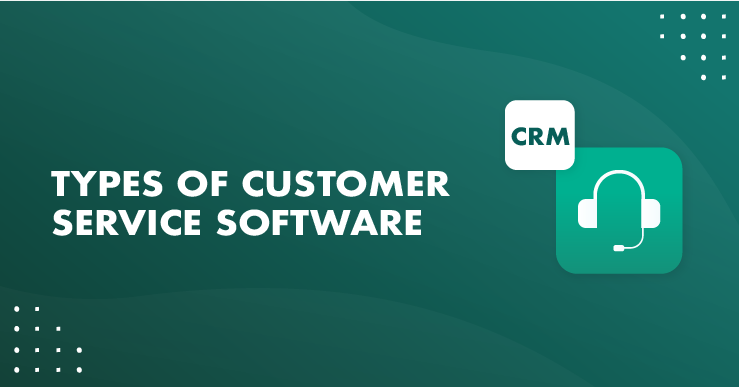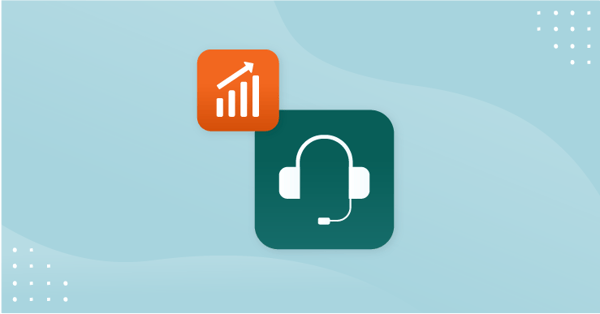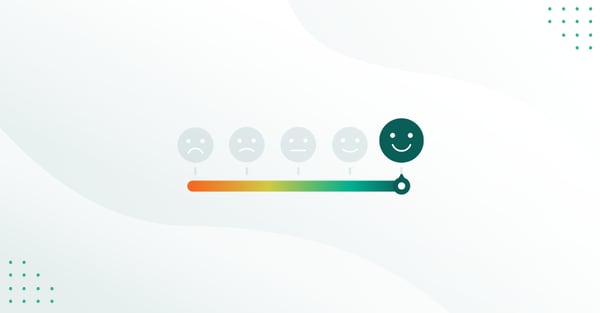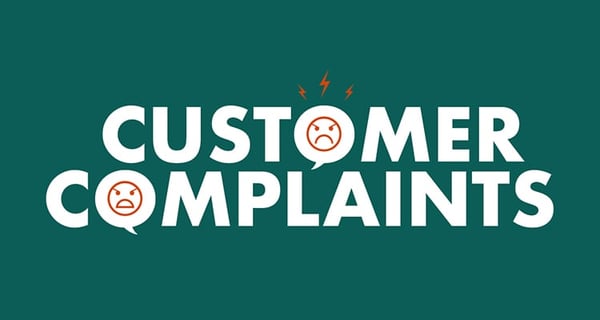Customer service is not a new concept – but it’s critical to your business.
The legendary management consultant Peter Drucker said it best: “A company’s primary responsibility is to serve its customers” – and that was in 1954!
More recently, 40% of customers in the US have stopped doing business with a company due to poor customer service.
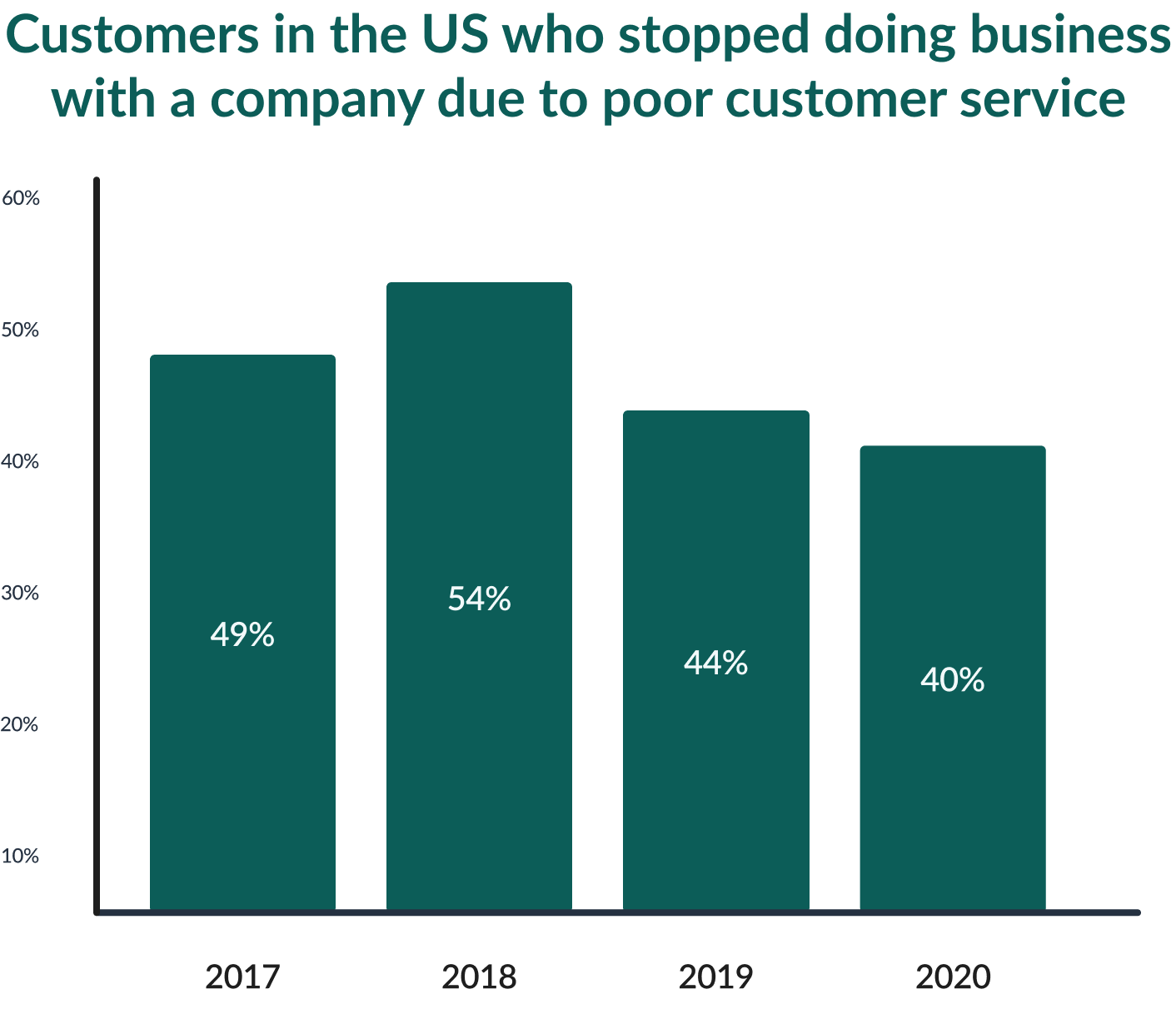
Meanwhile, 73% of customers will consider switching to a competitor after just one bad customer experience. On the flipside, 68% of buyers will pay more for products and services from a company with a strong record of good customer service.
So, it's clear that providing high-quality customer service is crucial if you want to retain your customers and grow your business.
To provide a consistently high quality of customer service– that is scalable, available in real-time, and includes self-serve options - you will need to invest in customer service software.
However, not all customer service software is the same, so making the right choice is critical to your future success!
✔️ Get it right, and you’ll have happy customers who stay with you for the long term, spend more money, and even recommend you to other people.
❌ Get it wrong, and your customers will vote with their feet, causing a surge in churn, a loss in revenue, and even negative word-of-mouth sentiment.
Choosing the right customer service software can be a challenge, so we’ve put together this comprehensive guide to help your decision-making.
Read on to discover what customer service (CS) software is, the key benefits it can bring you, the 4 main types of CS software you should be considering, comparison tables, expert insights, and tips on making the right choice for your business.
What is customer service software?
At its core, CS software is designed to help you manage, respond to, and resolve customer queries and issues.
Customer service software will also help you to centralize all your customer data and communication across multiple channels like email, chat, support tickets, and phone calls – helping you efficiently track, prioritize, and address customer interactions.
You can expect the best customer service software to include features like CRM, ticketing systems, knowledge bases, live chat, reporting tools, and a full suite of integrations with other business software.
Using CS software will help you improve the experience for your customers – so you can build stronger relationships with them, which will ultimately lead to enhanced loyalty and retention.
What are the benefits of customer service software?
Now that we’re all clear on what customer service software is, let’s explore some of the benefits you can expect when you choose the right tool for your business.
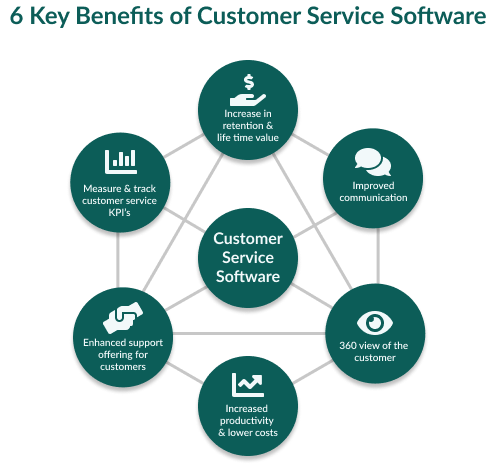
We’ve identified 6 key benefits you’ll experience from using customer service software:
1. An increase in retention and lifetime value. What you really need is your customers to stick around for the long term and spend more money with you for your business. Using the right customer service software will help you enhance the customer experience with your business and keep them coming back for more.
2. Improved communication. The best way to communicate with your customers is to use a channel they’re comfortable with. Using customer service software, you can communicate with your customers across multiple channels – including email, phone, chat, and knowledge base, to make seeking out help and support easier for your customers.
3. 360 view of the customer. No one likes to feel like they’re not being listened to. By leveraging customer service software, you can always have all your customer’s information available at your fingertips. So any member of your team can help them quickly and efficiently without any repetition or frustration.
4. Increased productivity and lower costs. Because customer service software offers scalable features like live chat, automation, and self-serve options, you can do more to serve your customers and use fewer resources simultaneously – lowering your costs and improving the bottom line.
5. Enhanced support offering for your customers. Because of the flexibility that the best customer service software can give you, it means you can be more flexible with your customers, too. Offering them enhanced support across multiple channels and 24/7 self-serve options means help is always on hand.
6. Measure and track customer service KPIs. The best customer service software can help you measure and track everything, so you can always see that your customers' needs are being met and your team is on target.
4 main types of customer service software
We’ve already mentioned that not all customer service software is made equally, but this isn’t just about different brands - there are different types to consider, too.
In this section, we’re going to break down the 4 main types of customer service software you should consider: CRM, helpdesk, live chat, and knowledge base.
1. CRM software
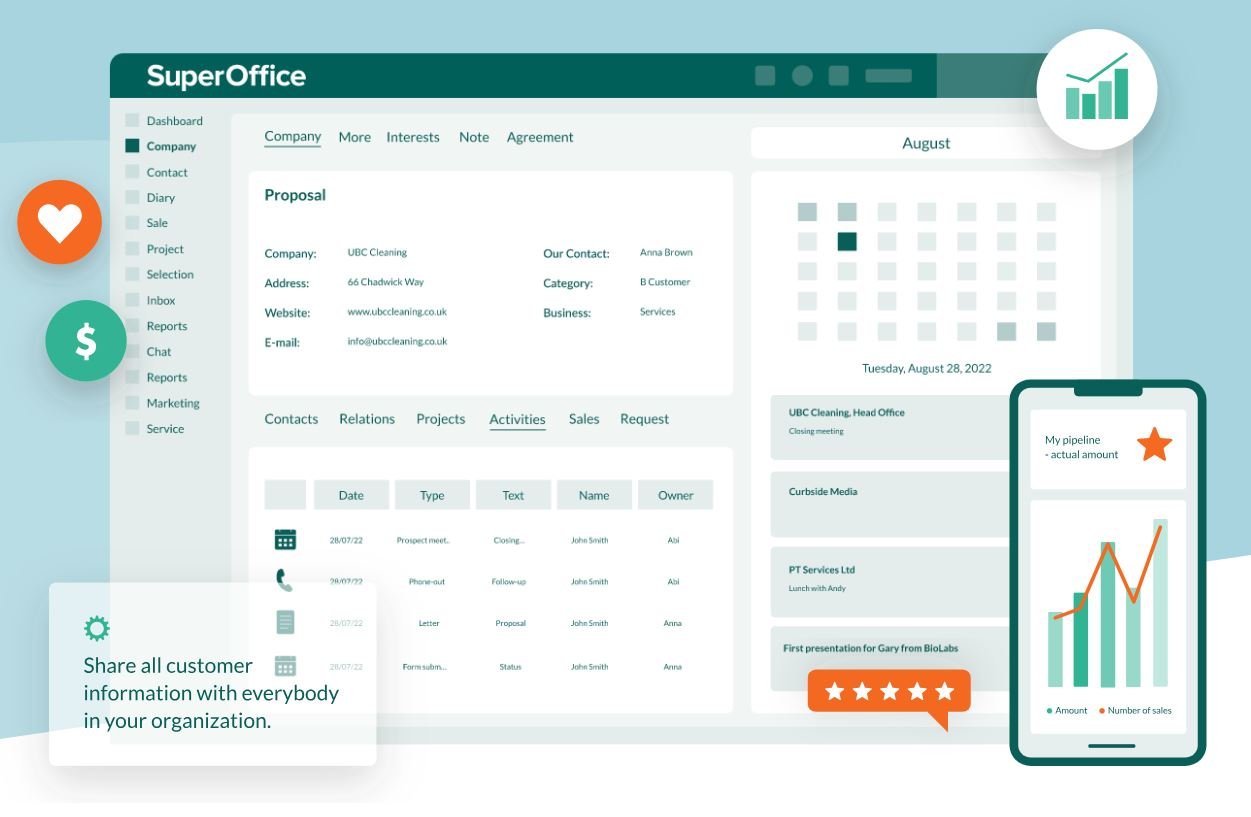
A CRM (customer relationship management) is a type of software designed to help you centrally manage all aspects of your ongoing relationship with your customers.
Inside a CRM platform you can expect to find a complete view of your customers, covering everything from their contact details and previous purchases to their preferences, support requests, and previously flagged upsell opportunities. All this and more helps you to stay on top of your customer’s service needs at the touch of a button.
You can use a CRM to not only understand your customers but contact them, too, through email. Leveraging automation tools can help you stay in touch with different customer segments automatically, helping you to service at scale.
When it comes to investing in a CRM system, businesses can expect an ROI of $30 for every $1 spent – which goes to show how critical they are to your operations.
Companies that use CRM systems have seen a 17% increase in lead conversions, a 16% boost in customer retention, and a 21% improvement in customer service agent productivity - again making investing in a CRM something of a “no-brainer” decision for companies of all sizes and in all sectors.
 |
“We use a CRM to monitor client communications and feedback, so we're able to elevate customer satisfaction, foster loyalty, and fuel our overall growth strategy. It's a strategic move that helps us stay competitive and better serve our clients”. Jas Banwait Gill - Growth Manager at SwagMagic |
2. Help desk software
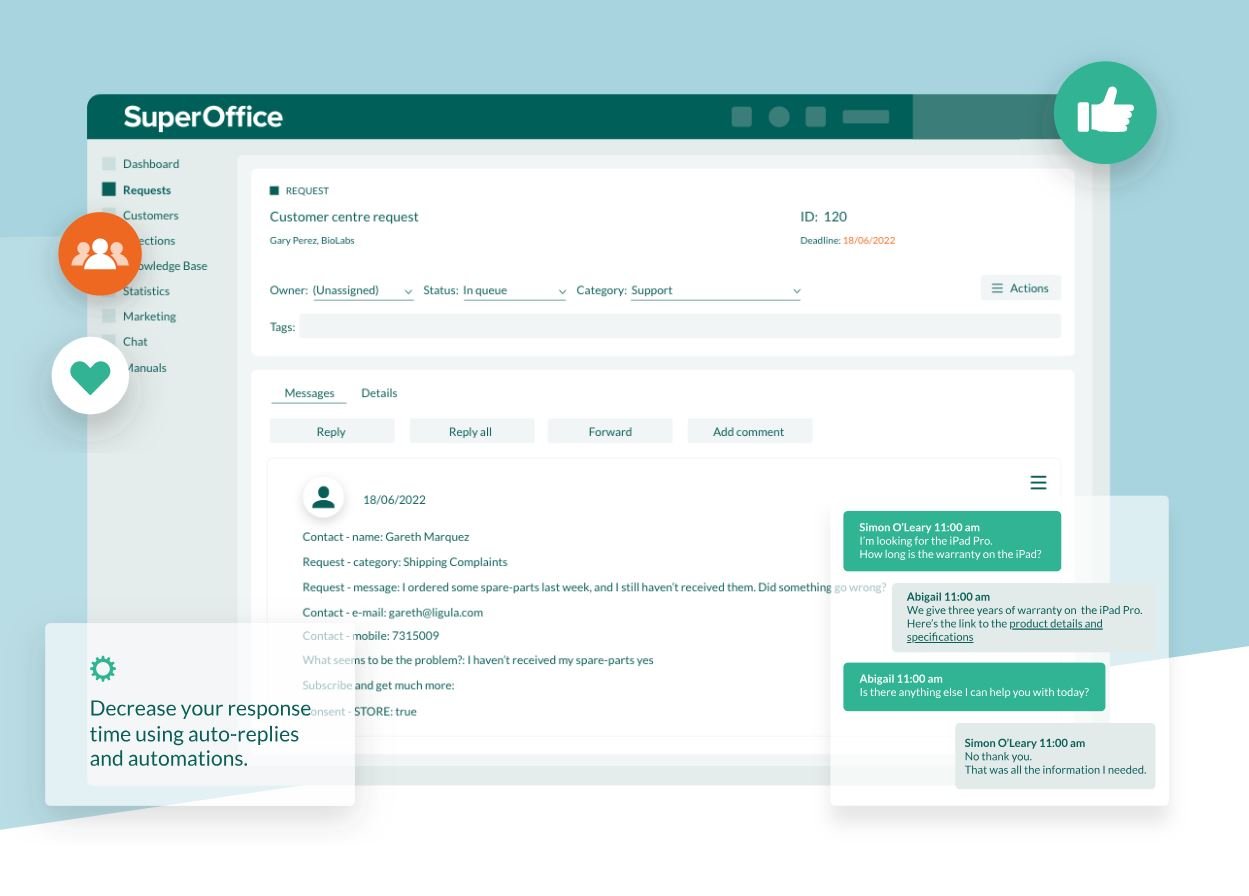
Helpdesk software is a tool designed to help you run your customer support by tracking, prioritizing, and answering customer queries and issues.
Typically, helpdesk software enables your customers to send support tickets for your service team to answer. These could be technical issues, payment issues, or anything in between.
Helpdesk software helps you understand the status of tickets, if they’ve been answered in line with your SLAs and KPI targets, and of course, help you quickly give your customers the information they’re looking for.
But why do you need helpdesk software?
86% of service teams note that having a help desk system increases their productivity.
In fact, leveraging help desk software can save up to 670 working hours per year by reducing the number of phone calls by 10% and freeing up 25% of your help desk resources for higher-impact tasks.
Helpdesk software is ideal for any kind of digital-first company. This could include SaaS, but it can be used by any company wishing to manage a high volume of customer inquiries.
 |
“For handling customer inquiries and providing support, we use helpdesk software. It's a fantastic tool that streamlines our support operations, ensuring that we respond to our customers quickly and effectively”. Suraj Nair - Growth at SocialPilot |
3. Live Chat software
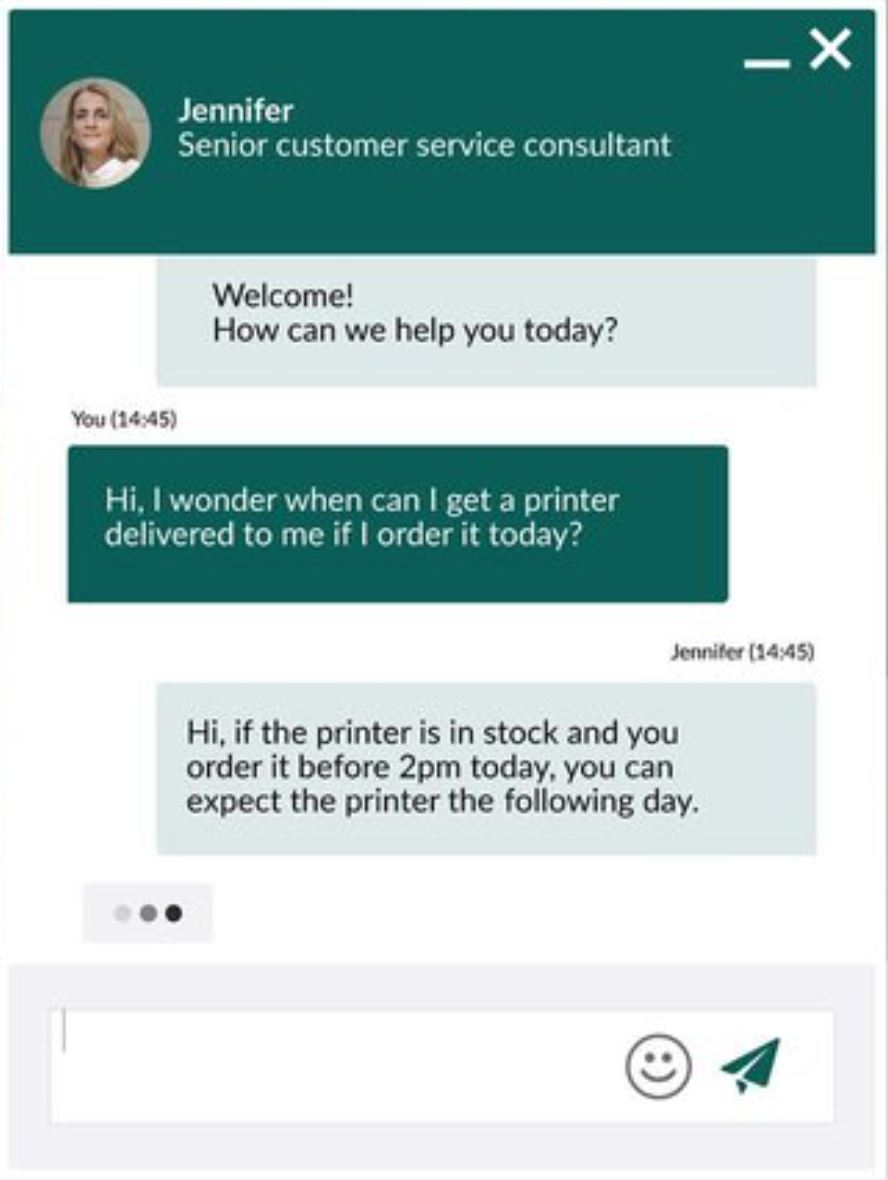
Live chat software helps you communicate with your customers in real time.
Generally, customers can access live chat via your website or inside your app. Your customer service team can use it as a “Tier 1” support mechanism or to help with answering pre-sales questions.
One of the key benefits of live chat software for both you and your customers is the speed of response. For more basic requests, you can respond to your customers in a matter of seconds – depending on availability.
Today, more than 41% of customers expect live chat on your website, but as few as 9% of companies use it.
Plus, live chat has now replaced phone and email as the preferred means of accessing customer support for many customers.
Live chat is a great option for companies that have low-complexity support issues that can be quickly answered in a sentence or two, or by sending over a link with more information.
A possible drawback of live chat is it can get messy, for example, when the conversation becomes too long. Some information may get lost or go unnoticed. Or when a customer needs to send supporting evidence, such as screenshots. Luve chat shouldn’t be seen as a substitute for a more robust helpdesk tool in these cases.
However, it is suitable for most segments in both B2B and B2C and can become a useful part of a multi-channel service approach.
 |
“We use software to manage our customers and help us automate a lot of mundane tasks. This includes helpdesk software to run our live chat and customer support tickets”. Tarun Agarwal, VP of Growth at Mailmodo |
4. Knowledge base/ Self-Service software
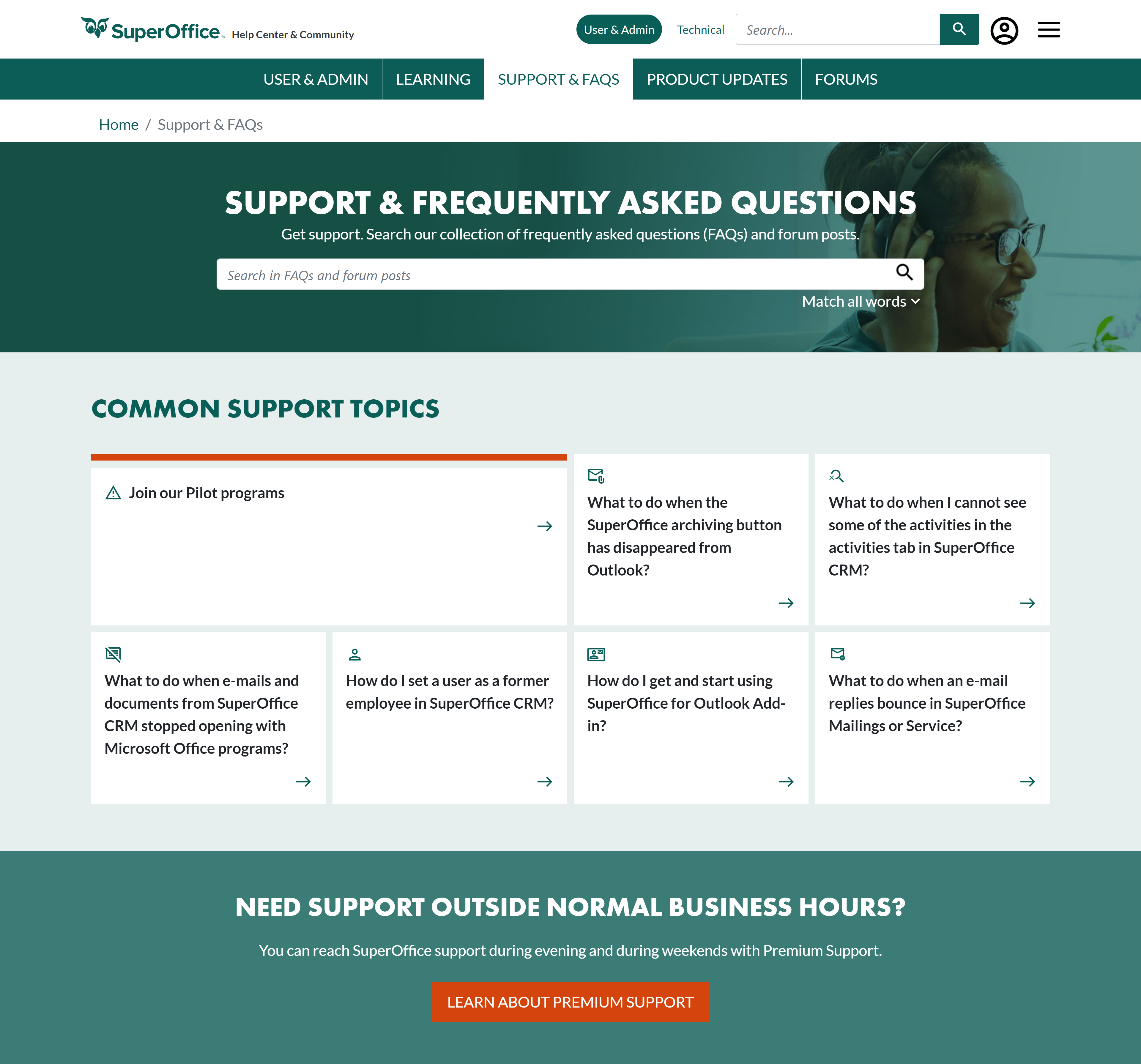
A knowledge base is essentially an “always on” directory of information about your product or service.
Customers will use it to search for information to help them with a query or issue, often as a first “port of call” before they submit a support ticket or use live chat.
Because it’s essentially a website, it means your knowledge base is available 24/7, 365 days a year, enabling your customers to find answers to their questions at any time of the day or night.
One of the key benefits of this is that you can reduce support costs, whilst at the same time giving your customers instant access to the help they need when they need it most.
A knowledge base is so helpful, in fact, that 89% of customers say they will spend more with companies that allow them to find answers online without having to contact anyone.
Often leveraged by SaaS companies, the truth is that any company with repeatable processes and non-customized solutions should consider a knowledge base as a key part of their customer service toolkit.
 |
“We have a help center for users that is available both in the client portal and through our website. We also have a developer-focused knowledge base with tutorials on how to customize the portal for our more ‘techy’ customers”. Deian Isac - Head of Agency Success at Service Provider Pro |
How are the 4 types of customer service software different?
There is a lot of overlap between the 4 key types of customer service software – after all, they’re all designed to help you serve your customers.
Whilst they are all designed to perform different tasks, they all have a number of features and benefits in common.
To help you navigate your way through this similarity and think more strategically about which one(s) are right for your business, we’ve prepared 2 comparison tables: one on features and one on benefits.
Benefits
To help you clearly see if a CRM, helpdesk, live chat, or knowledgebase system is right for you (or a combination of all 4), we’ve focused on comparing them against 6 key benefits:
- Will it increase customer retention and improve customer lifetime value?
- Can it contribute towards improving communication with your customers?
- Does it give you a 360-degree view of all your customer data?
- Will it increase productivity and help lower your operational costs?
- Can it help you give enhanced or specialist support to your customers?
- Can you use it to measure and track customer service levels and KPIs?
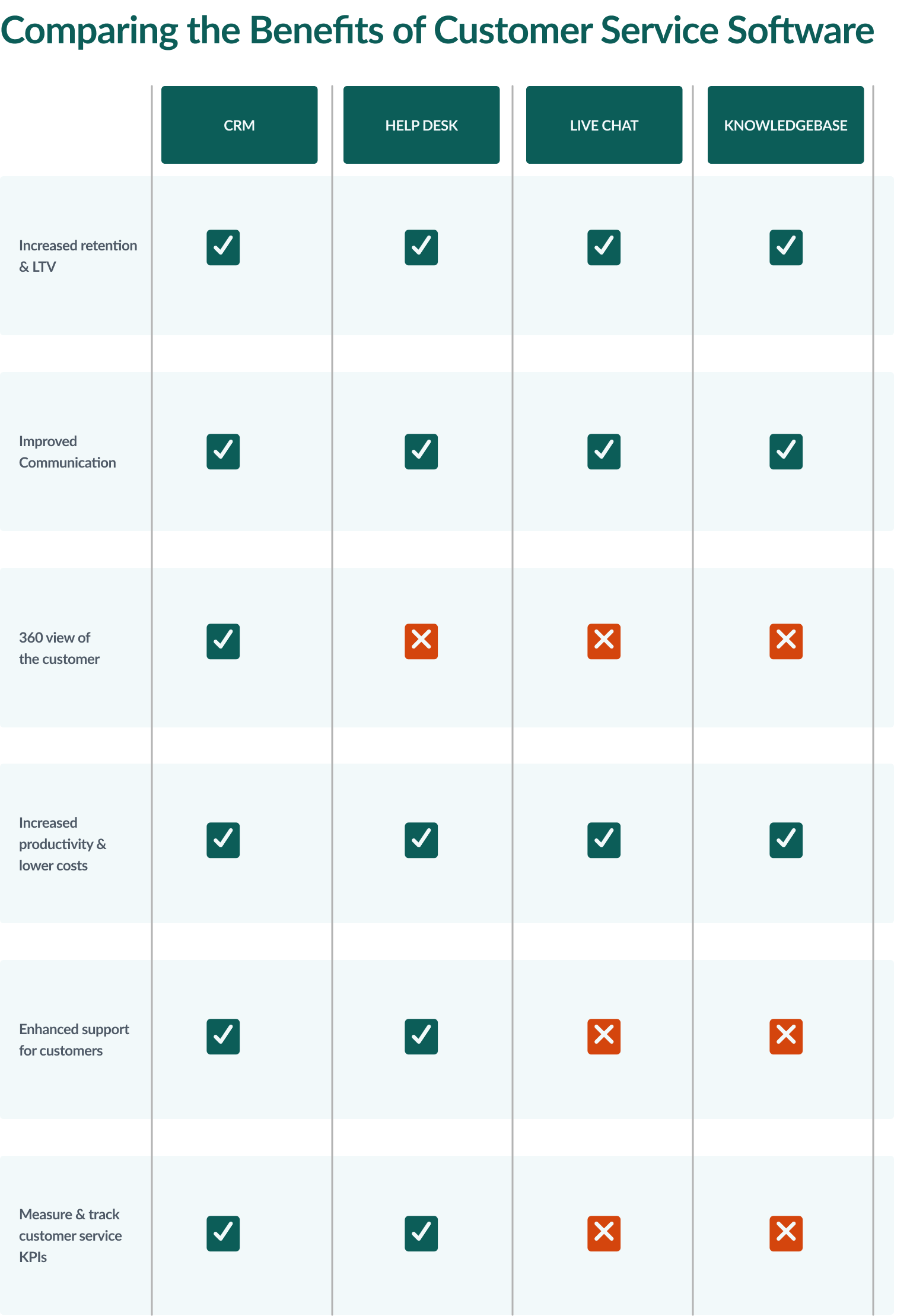
Features
To further clarify if a CRM, helpdesk, live chat, or knowledgebase system is right for you (or a combination of all 4), we’ve also focused on comparing them against 6 key feature sets you should expect in any customer service tool:
- Segmented communication based on customer type
- Centralized 360-degree view of all your customer data in one place
- Multi-channel communication options
- Template response options to increase productivity
- Smart automation to easily take care of mundane tasks
- Multiple integration options to shared and compare data across platforms
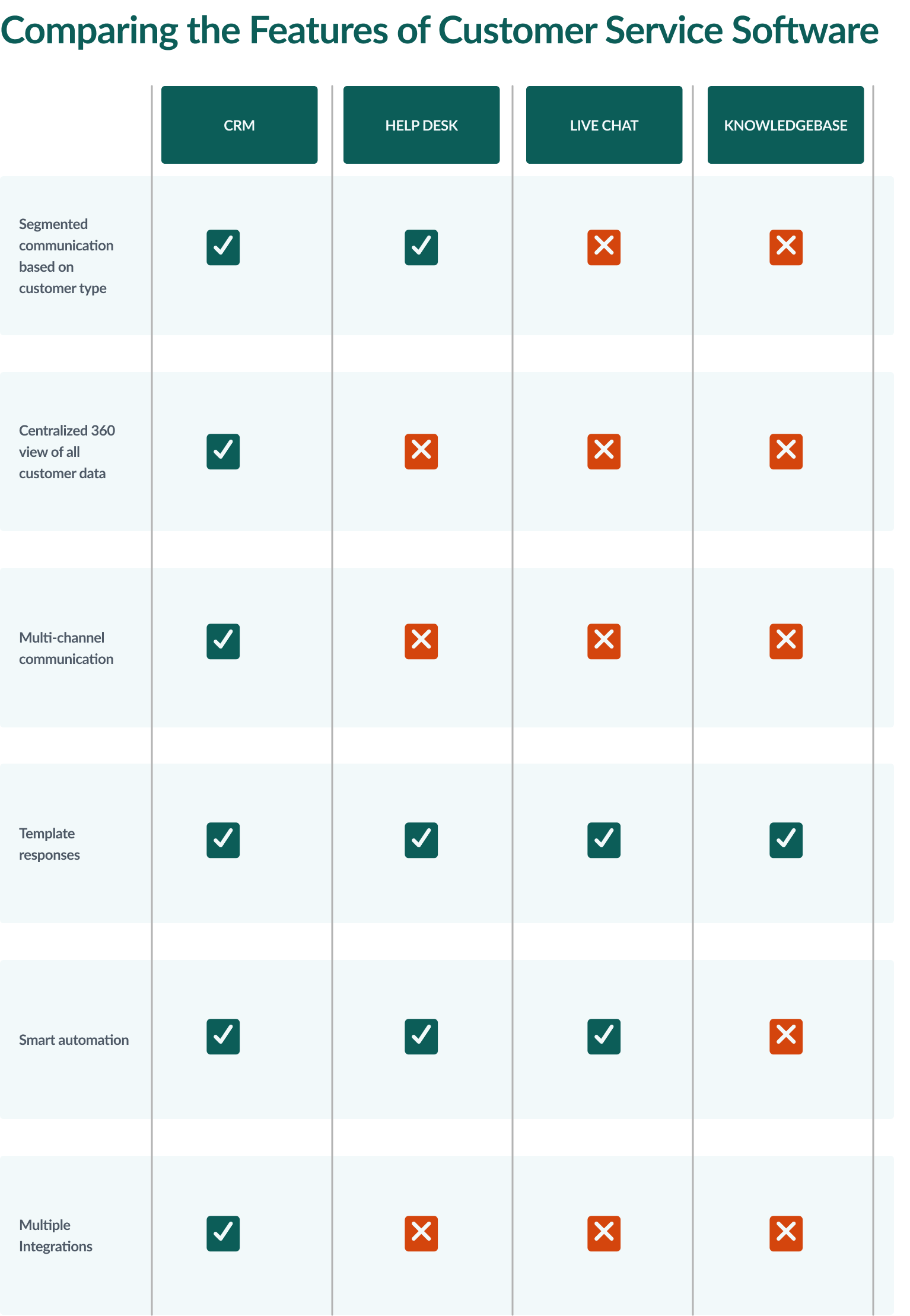
As you’ll see from both tables, a CRM-based system ticks all the boxes (literally!).
However, we suggest that you don’t overlook the helpdesk, live chat, or knowledge based systems, which can be especially powerful when combined with a CRM.
How to choose the right customer service software for you
Now, it’s decision time.
You’ve seen how CRM, helpdesk, live chat, and knowledge base software could help you to service your customers – but how do you choose the right one(s)?
We’ve put together some actionable steps to help you get started in your decision-making process.
Answer the following questions and you’ll be in a great place to choose the right customer service software for your business.
- What problem are you trying to solve?
- What processes do you already have in place?
- What resources do you have in place to help you?
- What have your customers asked for?
- What type of support do you need to offer?
- What systems do you already have in place?
- What are your 1-year, 3-year, and 5-year growth plans?
- How could you overlap your service systems with sales and marketing?
By the time you’ve answered these questions and thought strategically about what’s right for you, you’re probably torn between more than one type of customer service software.
Luckily, advanced tools like SuperOffice CRM have all 4 tools rolled into one powerful customer service platform – which means you can leverage 1, 2, or even all 4 of the tools to radically improve your customer service and support offerings.
Servicing your customers end-to-end with SuperOffice CRM
What if you could combine CRM, help desk, live chat, and knowledgebase all in one easy-to-use platform?
Well, with SuperOffice CRM, you can! 😉
Our tools will give your customer-facing teams a 360-degree view of your customers as well as everything you need to work smarter, including the ability to:
- Handle all incoming queries in one place – so nothing gets lost
- Categorize, prioritize, assign, and process service requests faster
- Use automation to save time and improve communication
- Build up a rich Knowledge Base to reply to frequently asked questions
- Identify problem areas to improve your product, service, or processes
- Respond to customer service tickets on the move with mobile apps
Conclusion
We’ve talked in depth about customer service software and the different types you can choose from in order to help retain and grow your customers.
You can take several options from this article that will enable your customer service department to help dramatically improve how you support your customers.
Ultimately, though, whatever customer service tools you choose to adopt, it’s important to remember that they need to align with your business and available resource levels in order to best serve your customers – as a tool won’t do all the hard work on its own, without your team.
FAQs
Q: How do I choose customer service software?
A: The first thing you need to do is work out the problems you’re trying to solve and the processes you want customer service software to handle. Software is a fantastic tool, but it can’t fix underlying process issues. Once you’ve mapped out the processes, you can then choose the software that best meets your needs.
Q: Can I use a CRM for customer service?
A: CRM systems were originally developed to manage sales processes. However, the best CRMs out there include dedicated customer service modules and functionality to help you manage your entire customer relationship centrally.
Q: What is the difference between CRM and customer service?
A: CRM stands for Customer Relationship Management and is used both to describe a function in the business and a type of software. When talking about CRM as a function, customer service is a part of that. When talking about a CRM system, it helps you to manage your entire customer relationship, including customer service.
